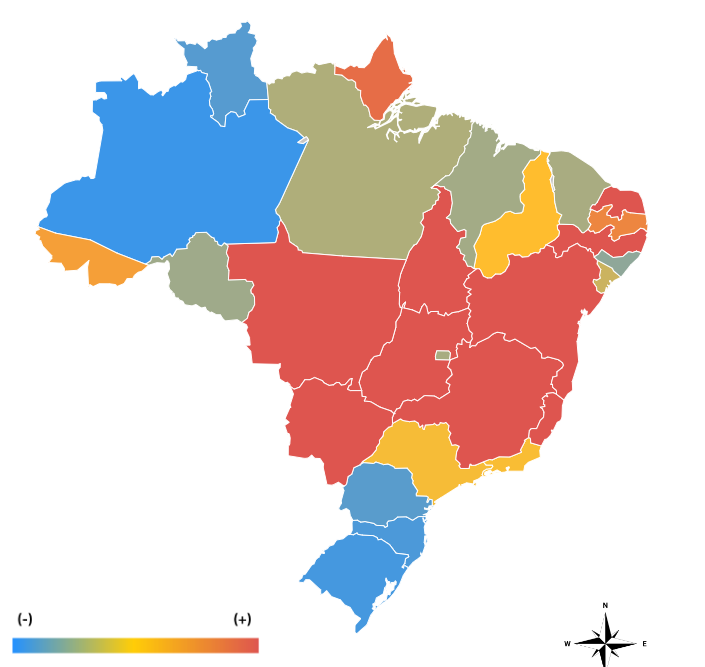Health officials in Brazil are reporting 254,170 probable chikungunya cases year to date. This includes 162 confirmed deaths and 153 under investigation.
The national incidence rate for chikungunya is 125.2 cases per 100,000 population.
The state of Minas Gerais accounts for 63 percent of the national case total (159,840), with a incidence of 778 per 100,000 population.
Mato Grosso, Bahia, Espírito Santo and São Paulo follow well behind in case totals.
The age groups most affected by the disease include the groups 20 to 29 years old; 40 to 49 years old; 30 to 39 years old; and 50 to 59 years old, respectively.
The number of Oropouche fever cases reported in Brazil stands at 7,848 confirmed cases. This compares to 831 confirmed cases in 2023.
Amazonas (3,230) and Rondonia (1,710) states have reported the most cases.
Concerning fatalities, at the end of July, the Ministry of Health confirmed two deaths from the disease in the interior of Bahia. Until then, there had been no reports in the world's scientific literature about deaths from Oropouche. The two victims were women, under 30 years old, and had no comorbidities. Both presented signs and symptoms similar to severe dengue fever.
Now the Ministry of Health reports investigating a suspected death due to Oropouche fever in Paraná. According to the deputy secretary of the Health Surveillance Department, Rivaldo Venâncio, although the death was reported in Paraná, the hypothesis is that the likely location of the infection is the state of Santa Catarina.
Concerning other arboviruses, more than 6.5 million dengue cases, including 5,244 fatalities and 7,766 Zika virus cases.






